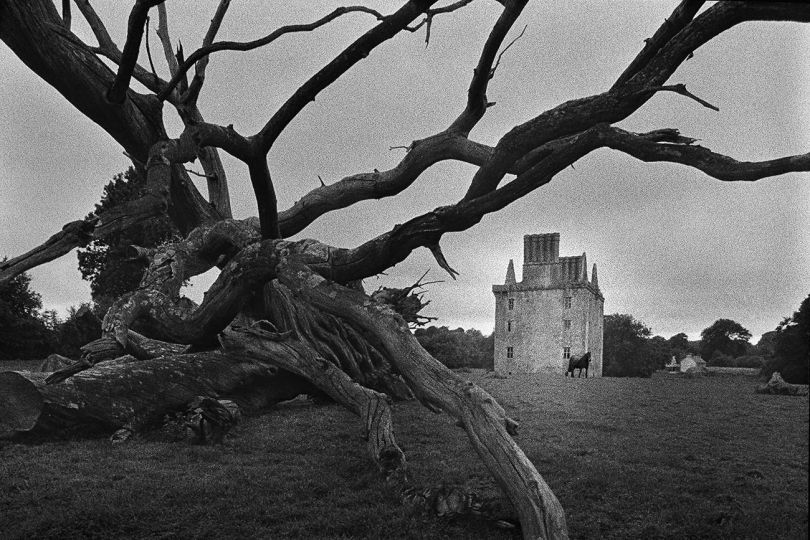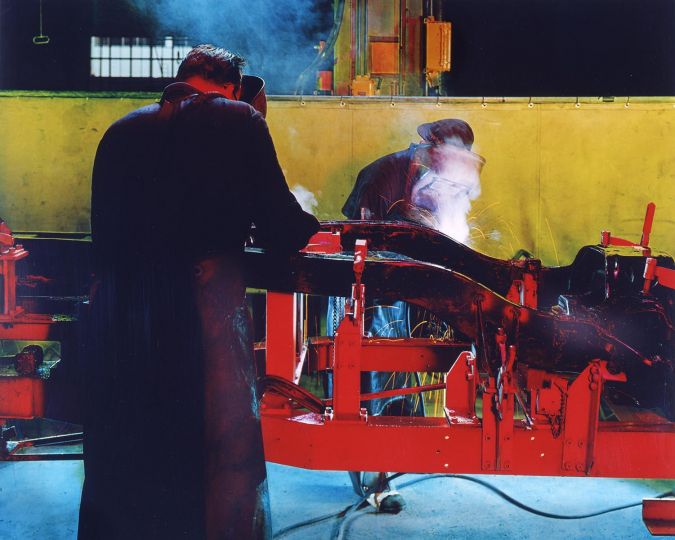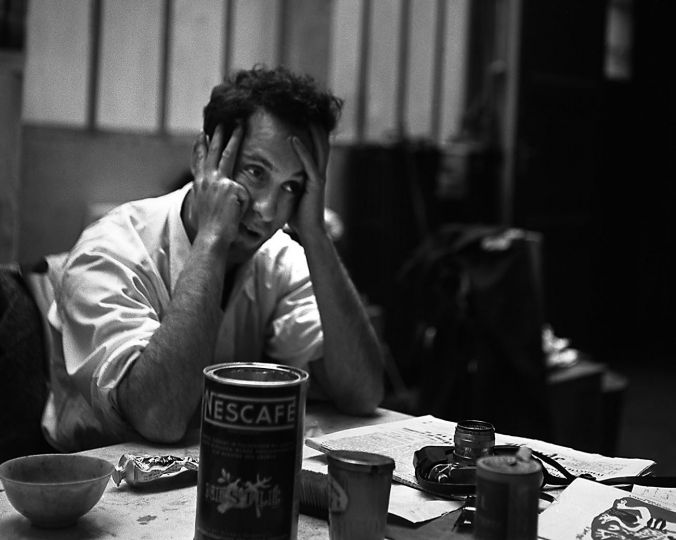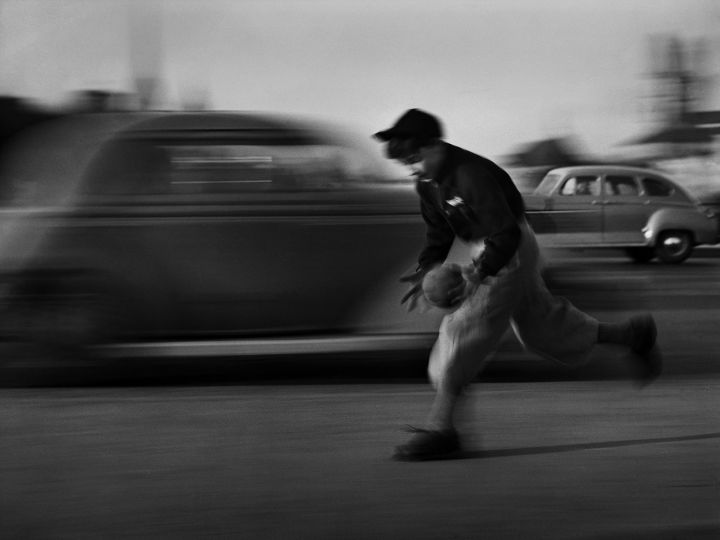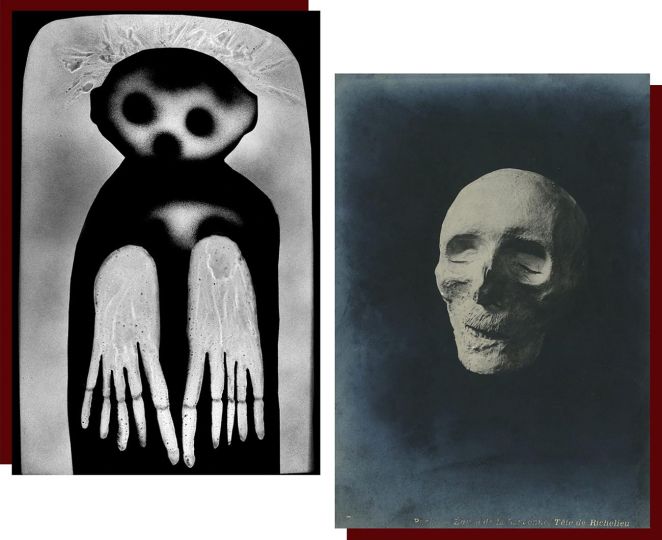The Centre Internacional de Fotografia Barcelona (CIFB) constitutes a failed experiment in the institutionalization of photographic culture in the Spanish transition. This exhibition is a contribution to an archaeology of contemporary photographic culture in Spain. The exhibition includes 263 vintage prints and 310 slides. Moreover, the show also features previously unseen documentary material, including posters, magazines and other publications. The exhibition includes photographs by 22 artists: Enric Aguilera, Miquel Arnal, Jesús Atienza, Anna Boyé, Lluís Casals, Pep Cunties, Manel Esclusa, group Extra (Sergi Capellas, Jordi Garcia y Xavier Roselló), Ferran Freixa, Manolo Laguillo, Esteve Lucerón, Xavier Martí Alavedra, Eduard Olivella, Lucho Poirot, Jordi Pol, Humberto Rivas, Jordi Sarrà, Eduardo Subías, Josep Tobella and Mariano Zuzunaga.
The CIFB opened in October 1978, following the model of New York’s ICP. It was an advanced photography school with darkrooms, studios and classrooms, a library, a film theater, an exhibition space and a bar. It was directed by Albert Guspi (1943-1985), former photo-reporter in the 1960s, and founder of the first commercial photo art gallery in Spain, Galeria Spectrum in Barcelona opened in 1973. The gallery program was international and combined contemporary and historical work. The gallery quickly evolved into a more complex network, including a photography workshop program starting in 1975. Funded by Canon, Guspi also started a network of photo galleries in Spain, following the model of the Canon gallery network in Europe (Paris, Amsterdam, Milano, Geneva).
In 1978, Guspi rented a factory building in the Barrio Chino and opened the CIFB, using the team of the previous photography workshop as faculty and organizational unit. The team of post-pop figurative painters Arranz-Bravo and Bartolozzi were invited to paint a huge mural covering the whole building façade with a selection of portraits of the great heroes of the history of photography, organized chronologically. The façade turned this way into a visual synopsis of the history of photography. The CIFB was into the documentary tradition of the 1930 photojournalistic culture, following Cornell Capa and ICP’s “concerned photography” approach, even if the faculty was a combination of photo-documentarians and creative photographers. Those distinctions between documentary and creative photography seemed not to be institutionalized at that time, which means a conviviality of practices that today often remain separate.
The CIFB presented exhibitions of Agusti Centelles, August Sander, Heinrich Zille, Felix H. Man, Aaron Siskind, Philip Trager, Milton Rogovin, Gabriel Cuallado, Enric Aguilera and others. It also organized public evening talks and screenings weekly, in which the most significant local photographers participated and some visiting artists as well, such as Aaron Siskind.
The 1970s are a period of structural transformation in the institutions of photographic culture internationally. New York’s ICP is also a product of this 1970s transformation, as the Rencontres d’Arles or the Centre National de la Photographie in France are, and as the multiplicity of institutions, university programs, festivals, galleries, etc simultaneously appearing worldwide at the time are too. This CIFB project is a micro-study of the specific local Barcelona conditions of the much larger macropolitical transformation of culture industries and policies taking place in the West at that time.
The Barcelona documentary project
The exhibition includes work produced in the period 1978-1983 by the CIFB faculty members, some students and some independent photographers who were close to the CIFB and active in projects promoted by it, or who participated in the public talks. The selection of works in the exhibition aim at giving visibility to the Barcelona documentary project which constituted the core of the CIFB activity, peaking in 1979 to 1981. The idea was to produce a collective photo survey of the everyday vernacular life in the city, in a period which was defined by the immediate post-Franco urban decay. The city was in a transitional and still undefined moment, when reconstruction of democratic institutions was just starting, which would culminate with the socialist rule in Spain after 1982.
The first one focuses on representations of the working and lower class areas and communities, like the historic red light district were the CIFB was and its surroundings, the port, the La Perona gipsy shanty-town, the slaughterhouse, etc. The second one is a monographic slide projection (2 synch Kodak carrousel projectors, 160 slides, piano recording soundtrack) of a documentary made by 3 of the CIFB photographers (Jesus Atienza, Pep Cunties and Eduardo Subias) in an old mental hospital in 1980.
The third and last area focuses on imagery produced from carnavalesque subcultures which point to the emergence of new social behaviors and practices, from late Franco resistance counter-cultural spaces to the new democratic public sphere conditions. Carnavalesque occupations of public space in the post-Franco period symbolized the social transformation and claims for democracy, which would lead to a creative social and artistic explosion in Spain in the late 70s. Gay and trans-gender subcultures played a key role in the micro-political transformation of public culture in the Spanish Transition.
Cristina Zelich
Freelance curator. Born in Barcelona in 1954. Lives in Salamanca (Spain). From 1977 to 1983, director of Galería Fotomonía (Barcelona). 1982 and 1983: Member of the organizing team of the Primavera Fotógrafica Festival (Barcelona). Since 1983 works as a freelance curator.
Author of the Llibre blanc del patrimoni fotogràfica a Catalunya, Generalitat de Catalunya, Departament de Cultura, Barcelona, 1996.
From 1996 to 2001 has coordinated the exhibitions at the Centro de Fotografía of the University of Salamanca
2002: Exhibitions and publications coordinator for Salamanca 2002 Cultural Capital of Europe.
2003: Exhibitions and publications coordinator at the CASA (Centro de Arte de Salamanca).
Last exhibitions as freelance: Márgenes (Paul Seawright, Guillaume Herbaut, Ricardo González and Sunil Gupka), Conde Duque, PhotoEspaña, Madrid, 2007; Talent Latent SCAN Festival, Tarragona and Arts Santa Mònica, Barcelona, 2009; Lisette Model, coproduction Fundación Mapfre, Madrid, 2009, and Jeu de Paume, París, 2010; Protagonistas en la sombra. La evolución de la mujer española en los fondos fotográficos de la Agencia EFE, European Council, Brussels, 2010 (travelling exhibition); Catalunya Visió, Arts Santa Mònica, Barcelona, 2011; CIFB. Centre Internacional de Fotografia Barcelona 1978-1983, MACBA, Barcelona, 2012.







